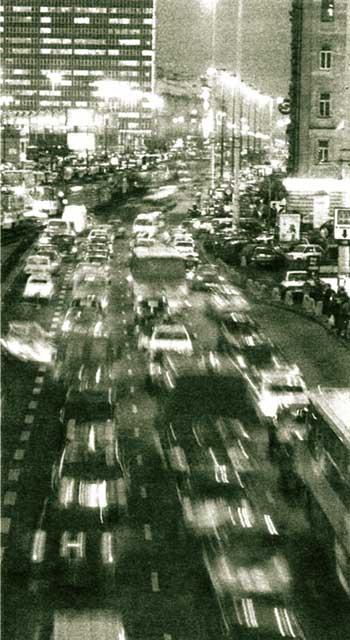PUPLIC
PARTICIPATION
Page 1
SUSTAINABLE DEVELOPMENT AND PARTICIPATORY PROCESSES
Page 2
WHAT
IS PUBLIC PARTICIPATION?
Page 6
DIFFERENT
WAYS
TO INVOLVE THE PUBLIC
Page 7
ROUND TABLES IN CANADA
Page 9
USING
ROUND TABLES IN THE TRANSPORTATION SECTOR IN POLAND
Page 10
URBAN
GREENING. PUBLIC PARTICIPATION IN
BANGKOK
Page 13
ENLISTING THE PUBLIC TO CLEAN UP CITIES
Page 15
EMPOWERMENT
AND PUPLIC PARTICIPATION
Page17
ICSC'S
ROLE AS A BROKER
Page 20
ICSC'S
CANADIAN TEAM-
PUPLIC PARTICIPATION AND MULTI-PARTY PROCESSES
Page 21


DOWNLOAD
TEXT ONLY
|

USING ROUND
TABLES IN THE TRANSPORTATION SECTOR IN POLAND
Dominica Babicki
Poland and Public Consultation
The overall political and economic reforms in Poland in 1989 brought
about an entirely new system of governance. Based on principles
of democracy and a free market, the national government devolved
a significant amount of both fiscal and political responsibility
to local governments. Issues such as transportation and waste
are now the responsibility of local governments (called gminas).
While most citizens are happy that these issues are now being
addressed at a local level, local politicians have at times had
significant challenges in fulfilling their new responsibilities.
One important reason local officials are facing
serious political challenges is their lack of experience in involving
the public in their decision-making process. In order to assist
them, ICSC, with the help of the Public Sector Bridge Program
(a CIDA funded program with a focus on building the capacity of
governments in Central and Eastern Europe) has developed projects
with the local governments in Poland's two largest metropolitan
areas - Warsaw and Katowice.

Warsaw, Poland's capital city has a population of
1.6 million and the Upper Silesian Industrial Region (commonly
refered to as the Katowice Region) includes more than 2 million
inhabitants and is the second largest metropolitan area in Poland.
For both, transportation is one issue that has become particularly
crucial and difficult. With an increase in private car ownership
and a decline in the share of public transit users from 90% in
1970 to 66% in 1998, the result is longer rush hours and more
frequent traffic jams. In addition, much of the rolling stock
of the public transit system has not been replaced in decades
due to decreasing public transit budgets and lack of sufficient
investment.
In response to these issues, both the Capital City
of Warsaw (an association of 11 gminas) and KZK GOP (an association
of 23 gminas coordinating public transportation in the Katowice
region) have approved progressive transportation plans. Implementing
these plans has however been a more challenging endeavour. While
local governments in both cities have recognized the need to involve
the public in the decision making process, each one has begun
this process in different ways and at different times.
Page 9 Page 10 Page11
GO TO
PAGE1, 2,
3, 4,
5, 6,
7, 8,
9, 10,
11, 12,
13, 14,
15, 16,
17,
18,
19,
20,
21,
Copyright ICSC 2000
|